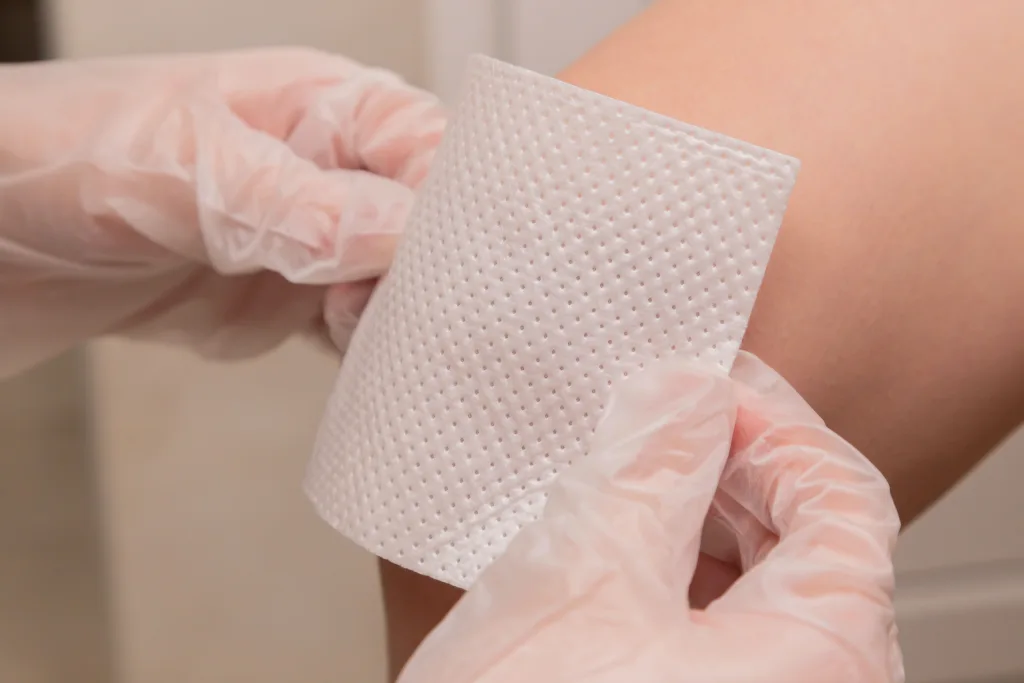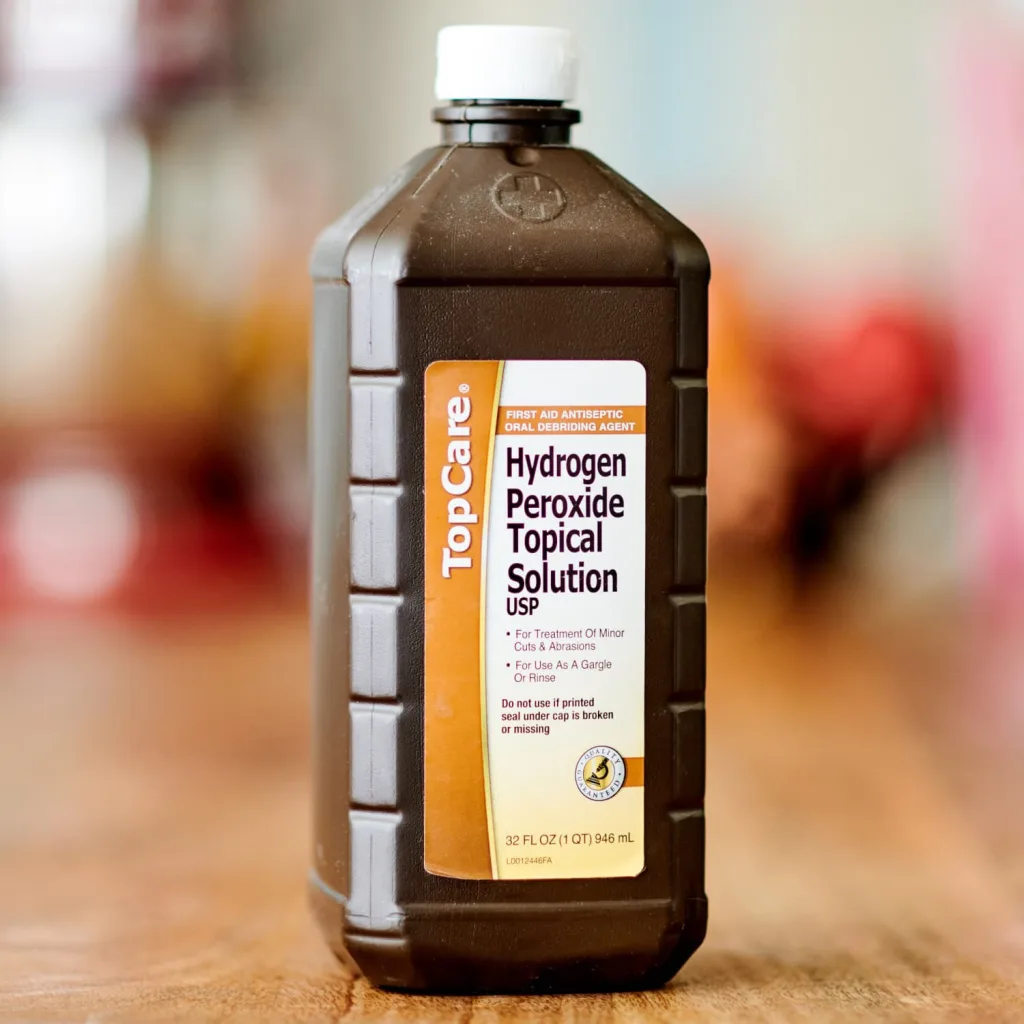When it comes to treating wounds and cuts, many of us have been taught that hydrogen peroxide is a go-to solution. It’s often used to clean wounds and has a reputation for its characteristic bubbling effect. But what does it really mean when peroxide bubbles? Is it a sign of infection, or is there more to it?
To understand the bubbling effect, we need to delve into the science behind hydrogen peroxide and its interaction with biological substances. Hydrogen peroxide is a chemical compound composed of hydrogen and oxygen, commonly used as an antiseptic. When it comes into contact with certain enzymes in the body, such as catalase, it breaks down into water and oxygen. This reaction releases bubbles of oxygen gas, leading to the foaming effect we observe.
Contrary to popular belief, the presence of bubbles does not necessarily indicate an infection. Rather, it is a result of the interaction between hydrogen peroxide and catalase, which is present in various tissues, including blood cells. Bubbles can form even in the absence of infection, as long as catalase is present.
In fact, the foaming action of hydrogen peroxide can sometimes be misleading. While it may give the impression that it is actively fighting bacteria, it is important to note that hydrogen peroxide is not selective in its action. It kills not only harmful bacteria but also healthy cells within the wound, including skin cells and immune cells that are crucial for the healing process.
Additionally, hydrogen peroxide can slow down the formation of new blood vessels, a process known as angiogenesis, which is vital for wound healing. By inhibiting angiogenesis, peroxide can actually hinder the healing process rather than promote it. This is why some medical professionals advise against using hydrogen peroxide on wounds, especially deep or severe ones.
It’s worth mentioning that hydrogen peroxide is a reactive compound and has a limited shelf-life. Once the container has been opened, its effectiveness diminishes over time. If you apply hydrogen peroxide to a wound and don’t see any bubbles forming, it could be an indication that the peroxide has exceeded its shelf-life and is no longer active.
The bubbling effect of hydrogen peroxide is not a definitive sign of infection. Rather, it is a result of the chemical reaction between hydrogen peroxide and catalase. While hydrogen peroxide can have some benefits in disinfecting wounds, its indiscriminate action on both harmful bacteria and healthy cells, as well as its potential to impede the healing process, should be taken into consideration. It is always advisable to consult a healthcare professional for proper wound care guidance.
Does Peroxide Bubbling Mean Its Working?
When hydrogen peroxide is applied to a cut or wound, it often produces a bubbling or foaming effect. This bubbling is typically seen as a sign that the peroxide is working to clean the wound.
The bubbling occurs because hydrogen peroxide is a powerful oxidizing agent. When it comes into contact with organic material, such as bacteria or living cells, it reacts and breaks down into water and oxygen. The release of oxygen gas creates the bubbling or foaming effect.
The presence of this bubbling can be an indication that the hydrogen peroxide is killing bacteria present in the wound. Bacteria are single-celled organisms that can cause infection if they enter a cut or wound. The oxidizing action of hydrogen peroxide helps to destroy these bacteria, thereby reducing the risk of infection.
However, it’s important to note that while hydrogen peroxide may help kill bacteria, it can also damage healthy cells and delay wound healing. The bubbling or foaming should not be used as the sole indicator of wound cleaning or effectiveness. Proper wound care, including cleaning with mild soap and water, is generally recommended over the use of hydrogen peroxide.
The bubbling or foaming effect observed when hydrogen peroxide is applied to a cut or wound is a result of its oxidizing action. While it can help kill bacteria, it should be used with caution and in conjunction with proper wound care practices.

Does Hydrogen Peroxide Draw Out Infection?
Hydrogen peroxide does not draw out infection. While hydrogen peroxide is commonly used as an antiseptic to clean wounds, its ability to effectively draw out infection is limited. Hydrogen peroxide works by releasing oxygen when it comes into contact with bacteria, which helps to kill them. However, it does not specifically target or “draw out” infection.
It is important to note that hydrogen peroxide can actually be detrimental to the healing process. Its reactive power is not specific to germs, meaning that it can also damage healthy cells within the wound. This includes healthy skin cells and immune cells, which are crucial for wound healing. Additionally, hydrogen peroxide has been found to slow down the formation of blood vessels, which is also important for the healing process.
While hydrogen peroxide can help kill bacteria in a wound, it does not have the ability to “draw out” infection. Its use should be limited, as it can also harm healthy cells and impede the wound healing process.
What Does It Mean When Hydrogen Peroxide Foams Up?
When hydrogen peroxide foams up, it means that a chemical reaction is occurring. Hydrogen peroxide is a compound composed of hydrogen and oxygen atoms. It is unstable and tends to break down into its components over time. This breakdown process is accelerated when hydrogen peroxide comes into contact with certain substances, such as catalase, which is an enzyme found in liver.
The foaming reaction happens because hydrogen peroxide decomposes into oxygen gas and water. The catalase enzyme acts as a catalyst, which helps speed up the reaction without being consumed in the process. The oxygen gas produced during the reaction gets trapped in the liquid or solid, forming bubbles that create the foam.
The foaming reaction is commonly observed when hydrogen peroxide is applied to wounds or used as a cleaning agent. The release of oxygen helps to clean and disinfect the area, as well as promoting the removal of debris. This is why hydrogen peroxide is often used as an antiseptic and for wound care.
To summarize, when hydrogen peroxide foams up, it indicates a chemical reaction taking place. The breakdown of hydrogen peroxide into oxygen gas and water, with the help of catalase enzyme, leads to the formation of bubbles and the creation of foam.
What Does It Mean If Peroxide Doesn’t Bubble?
When peroxide is applied to an infected wound or bloody cut, it typically produces bubbles. These bubbles are a result of a chemical reaction that occurs between the peroxide and the enzymes present in blood and bacteria. The bubbling action helps to clean the wound by removing dead tissue and killing bacteria.
However, if you apply peroxide to a wound and don’t see any bubbles forming, it could indicate that the peroxide is no longer active. Hydrogen peroxide is a reactive compound that can break down over time, especially once the container has been opened. This means that if your peroxide has exceeded its shelf-life or has been exposed to air for too long, it may lose its effectiveness.
To ensure that your peroxide is active, you can check the expiration date on the bottle. If it has expired or you are unsure, it is advisable to replace it with a fresh bottle. Using expired or inactive peroxide may not provide the desired cleansing and antibacterial effects, which could potentially hinder the healing process of a wound.
If peroxide doesn’t bubble when applied to a wound, it may indicate that the peroxide has exceeded its shelf-life or is no longer active. It is recommended to use fresh peroxide to ensure its effectiveness in cleansing and disinfecting wounds.

Conclusion
It is important to understand that infection is a complex process that involves the interaction between harmful bacteria and the body’s immune response. Infections can occur in various ways, such as through cuts, wounds, or other means of entry for bacteria. While hydrogen peroxide is commonly used to clean wounds and prevent infection, it is crucial to be aware of its limitations.
Although hydrogen peroxide may initially create a fizzing foam when applied to a wound, indicating the killing of bacteria, it is essential to note that it also harms healthy cells and slows down the healing process. This is because hydrogen peroxide is not selective in its action and can damage both harmful and beneficial cells within the wound.
Furthermore, the formation of foam occurs due to the breakdown of hydrogen peroxide into oxygen and water when it comes into contact with catalase, an enzyme found in the body. The release of oxygen gas creates bubbles, which get trapped in the liquid or solid, resulting in the foam.
It is also worth mentioning that hydrogen peroxide has a limited shelf-life, especially after opening the container. If there are no bubbles formed when applying hydrogen peroxide to an infected wound or cut, it may indicate that the peroxide has exceeded its shelf-life and is no longer active.
To effectively manage infections, it is advisable to consult a healthcare professional who can provide appropriate treatment options based on the severity and type of infection. They can recommend suitable antiseptics or antibiotics that target specific bacteria while promoting wound healing. Proper wound care, such as cleaning with mild soap and water, covering with a sterile dressing, and seeking medical attention for severe or persistent infections, is crucial for optimal recovery.
While hydrogen peroxide may have some disinfectant properties, its use should be approached with caution to avoid hindering the healing process and causing further harm to healthy cells.
